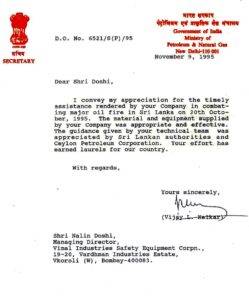Introduction
In the ever-evolving landscape of fire safety, the integration of robotics represents a leap towards enhanced efficiency and unparalleled safety. As industries expand and environments become increasingly complex, traditional fire fighting methods often fall short of addressing the multifaceted challenges posed by modern fire hazards. Enter the fire fighting robot—a marvel of modern engineering designed to navigate hazardous environments, ensuring both swift response and the protection of human lives. At the forefront of this technological revolution is Vimal Fire Controls, whose cutting-edge fire fighting robots are setting new standards in the industry.
The Evolution of Fire Fighting Robots
Early Concepts and Prototypes
The concept of using robots for fire fighting is not entirely new. Early prototypes, developed in the mid-20th century, were rudimentary at best—remote-controlled vehicles equipped with basic water cannons. These initial attempts highlighted the potential benefits of using robots in fire scenarios but also underscored significant limitations in terms of mobility, control, and fire suppression capability.
Advancements in Robotics and AI
The past few decades have seen rapid advancements in robotics and artificial intelligence (AI). These technologies have been harnessed to develop sophisticated fire fighting robots capable of performing complex tasks in extremely hazardous environments. Modern fire fighting robots are equipped with advanced sensors, AI-driven navigation systems, and robust fire suppression tools, making them indispensable assets in contemporary fire safety strategies.
Vimal Fire Controls: Pioneering Fire Fighting Robotics
Introduction to Vimal’s Fire Fighting Robots
Vimal Fire Controls has always been at the cutting edge of fire safety technology. Recognizing the transformative potential of robotics in fire fighting, Vimal Fire introduced its line of advanced fire fighting robots. These robots are designed to operate in conditions that are too dangerous for human firefighters, thereby reducing the risk of injury or death while enhancing the overall efficiency of fire suppression efforts.
Features and Capabilities
Vimal’s fire fighting robots are equipped with a range of advanced features that make them uniquely suited to handle complex fire scenarios:
- Advanced Mobility: These robots are built to navigate challenging terrains, including debris-strewn areas, narrow passageways, and uneven surfaces. Their robust design ensures stability and reliability even in the most demanding environments.
- Tracked Wheels: Many of Vimal’s robots feature tracked wheels, allowing them to traverse rubble and obstacles that would hinder human firefighters.
- Articulated Joints: Some models include articulated joints for better maneuverability in tight spaces, such as narrow hallways or staircases.
- State-of-the-Art Sensors: Equipped with heat and smoke sensors, infrared cameras, and gas detectors, Vimal’s robots can identify fire sources and hazardous conditions with pinpoint accuracy. This allows for precise targeting of fire suppression efforts.
- Thermal Imaging Cameras: These cameras provide real-time visual data, enabling the robots to locate hotspots even through smoke and darkness.
- Gas Detectors: By detecting hazardous gases, these robots can identify chemical fires and areas that are unsafe for human entry.
- AI-Driven Navigation: Using AI algorithms, these robots can autonomously navigate their surroundings, avoiding obstacles and optimizing their path to the fire. This capability ensures that the robots can quickly and efficiently reach the heart of the blaze.
- Machine Learning: The robots utilize machine learning to improve their navigation and fire-fighting strategies over time.
- Obstacle Detection: Advanced sensors help the robots detect and avoid obstacles, ensuring they can reach the fire quickly and safely.
- Robust Fire Suppression Tools: Vimal’s robots are armed with high-pressure water cannons, foam dispensers, and dry chemical extinguishers. This versatile array of tools allows them to tackle different types of fires effectively.
- Water Cannons: High-pressure water cannons can quickly douse flames and prevent them from spreading.
- Foam Dispensers: Foam is particularly effective for liquid fires, such as those involving oil or chemicals.
- Dry Chemical Extinguishers: These are used for electrical fires or fires involving sensitive equipment.
Operational Efficiency
One of the key advantages of Vimal’s fire fighting robots is their ability to operate continuously without fatigue. Human firefighters are often limited by physical exhaustion and the need for regular breaks, but robots can maintain a relentless assault on the fire until it is fully extinguished. This continuous operation capability significantly reduces the time required to bring a fire under control, minimizing damage and saving valuable assets.
Enhancing Safety in Hazardous Environments
Reducing Human Risk
The primary benefit of using fire fighting robots is the reduction of risk to human firefighters. In environments where temperatures soar to life-threatening levels or where toxic fumes are present, robots can step in and perform tasks that would otherwise endanger human lives. By taking on the most hazardous aspects of fire fighting, these robots ensure that human personnel are kept out of harm’s way.
- High-Temperature Resistance: Built to withstand extreme heat, these robots can operate in environments where humans cannot.
- Chemical Resistance: Some models are resistant to chemical exposure, making them ideal for industrial fires involving hazardous materials.
Precision and Reliability
Robots equipped with advanced sensors and AI can detect and respond to fire hazards with a level of precision and reliability that surpasses human capability. For instance, in industrial settings where hazardous chemicals may be present, robots can identify and neutralize fire sources without the risk of chemical exposure. This precision is crucial in preventing secondary explosions or the spread of fire to other areas.
- Accurate Targeting: Advanced targeting systems ensure that fire suppression agents are deployed exactly where they are needed.
- Consistent Performance: Unlike humans, robots do not tire, ensuring consistent performance throughout the duration of the fire fighting operation.
Case Studies: Vimal Fire’s Robots in Action
Industrial Fires
In large industrial complexes, fires can quickly escalate due to the presence of flammable materials and intricate infrastructure. Vimal’s fire fighting robots have been deployed in such settings, showcasing their ability to navigate complex layouts, locate the source of the fire, and apply appropriate suppression techniques. In one notable instance, a Vimal fire fighting robot successfully mitigated a fire in a chemical plant, preventing what could have been a catastrophic explosion.
- Chemical Plant Fire: The robot’s gas detectors identified a chemical leak that had started a fire. The robot quickly deployed foam to suppress the fire, preventing further spread and potential explosions.
Urban Search and Rescue
In urban environments, particularly in high-rise buildings, fire fighting robots have proven invaluable. Their ability to climb stairs, navigate narrow hallways, and operate in low-visibility conditions makes them ideal for search and rescue operations. Vimal’s robots have been instrumental in locating and rescuing individuals trapped in burning buildings, demonstrating their life-saving potential.
- High-Rise Rescue: In a high-rise fire, a Vimal robot navigated smoke-filled stairwells to reach and guide trapped individuals to safety, all while continuing to fight the fire.
The Future of Fire Fighting Robots
Continued Innovation
Vimal Fire Controls continues to invest in research and development to push the boundaries of what fire fighting robots can achieve. Future iterations are expected to incorporate even more advanced AI, enhanced mobility features, and new fire suppression technologies. The goal is to create robots that can handle any fire scenario with even greater efficiency and effectiveness.
- Swarm Robotics: Future robots may operate in coordinated swarms, allowing for even more efficient fire suppression and search and rescue operations.
- Improved Autonomy: Enhanced AI will allow robots to make more complex decisions independently, further reducing the need for human intervention.
Integration with Human Teams
The future of fire fighting will likely see greater integration between robotic and human teams. Robots will handle the most dangerous tasks, while human firefighters focus on strategic decision-making and coordination. This symbiotic relationship will maximize the strengths of both humans and robots, leading to safer and more effective fire fighting operations.
- Coordinated Strategies: Human and robot teams will work together, with robots taking on hazardous tasks and humans providing oversight and strategy.
- Enhanced Communication: Advanced communication systems will ensure seamless collaboration between human and robotic team members.
Conclusion
The role of fire fighting robots in modern safety strategies cannot be overstated. As technology continues to evolve, these robots are becoming increasingly capable of handling the most hazardous environments, ensuring the safety of human firefighters and enhancing the overall efficiency of fire suppression efforts. Vimal Fire Controls, with its cutting-edge fire fighting robots, is at the forefront of this revolution, paving the way for a future where fire hazards are met with unmatched precision and resilience. The ongoing advancements in robotics and AI promise a future where fire fighting robots will be integral to our safety infrastructure, saving lives and protecting assets in ways previously unimaginable.



